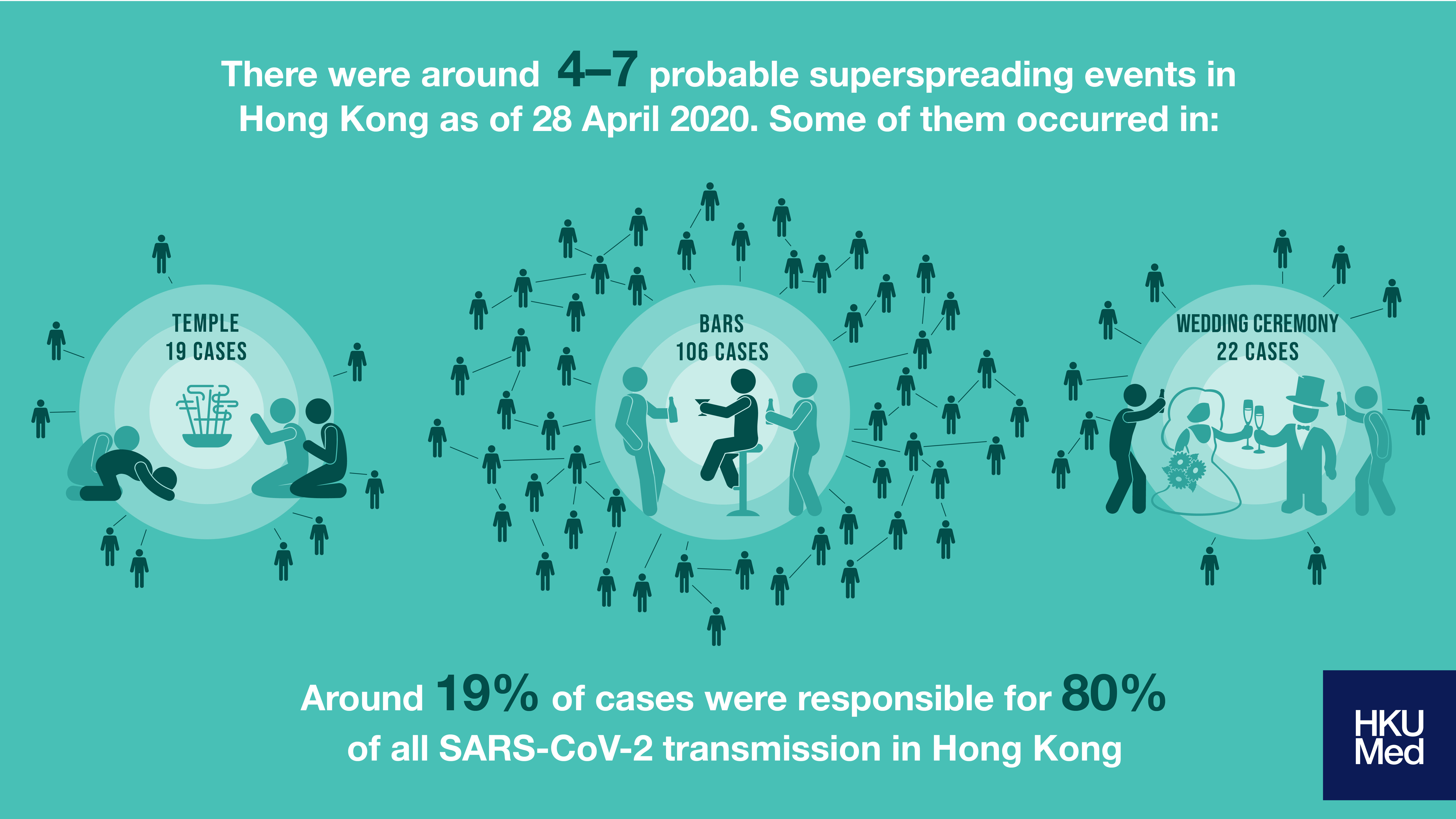How superspreading events (SSEs) are involved in the spread of COVID-19 remains unclear. A team of experts from HKUMed analysed data collected from contact tracing to identify the different groups of SARS-CoV-2 outbreak in Hong Kong and estimated the transmission rate of SARS-CoV-2 SSEs. The majority (51.3%) of SARS-CoV-2 infections in Hong Kong were associated with at least one of the 137 known cluster of cases.
Key takeaways from the study:
- The largest local cluster had 106 cases which were traced to a collection of four bars across Hong Kong. The original source of infection of this case remained unknown.
- A cluster of 22 cases was linked to two SSEs at a wedding and a preceding social event.
- Another SSE transmitted the virus at a local temple, resulting in 19 cases. 12 cases were directly linked to the SSE at the temple; while, the other 7 cases were linked via secondary family exposures.
- The virus was commonly transmitted within families, followed by social activities and at work.
The study results identified around 4–7 SSEs in Hong Kong, with varying number of infections arising from each SSE. Around 19% of cases were responsible for 80% of all local SARS-CoV-2 transmission in Hong Kong.
As SARS-CoV-2 continues to spread around the world, disease control measures in Hong Kong should focus on rapid tracing and quarantine of confirmed contacts, together with implementing physical distancing or closures of bars, nightclubs and restaurants to prevent of SSEs. Since we do not have an effective vaccine, the prevention of SSEs is even more important as many countries around the worlds start to ease lockdown measures and travel restrictions.
To read the original article published in Nature Medicine, click here.
